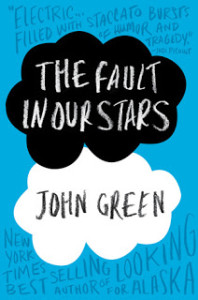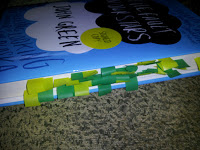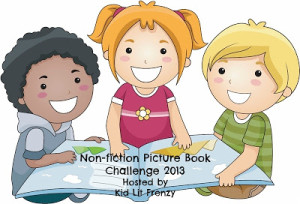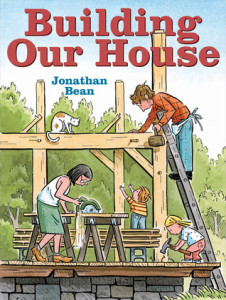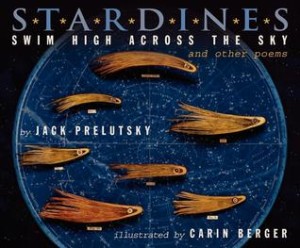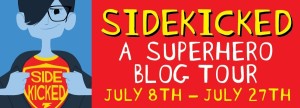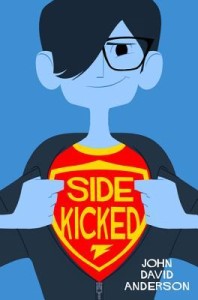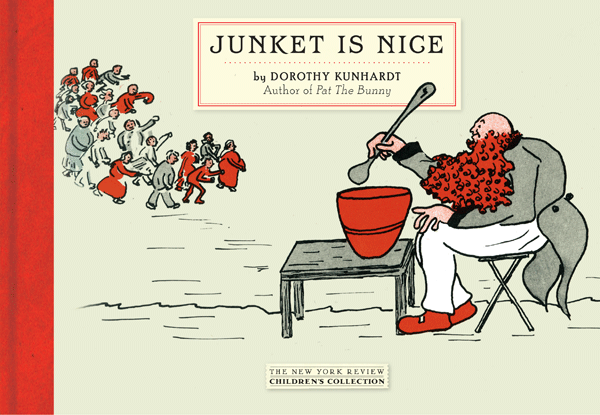Today, we are excited to review the three Amelia Elizabeth Walden Award finalists, and tomorrow, we can’t wait to review the winner! Please join us in the celebration of these three extraordinary texts which are very deserving of this recognition. We’ll see you tomorrow for our review of the winner!
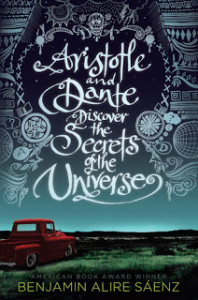
Aristotle and Dante Discover the Secrets of the Universe
Author: Benjamin Alire Saenz
Published February 21st, 2012 by Simon & Schuster Books for Young Readers
Summary: Aristotle is an angry teen who doesn’t have friends until he meets Dante. Through Dante, he learns about friendship, life, and loyalty. These two boys develop an unbreakable bond that helps them discover themselves.
Kellee’s Review: So beautifully written. This is one of those books that you want to tell everyone to read because it is so literary and lyrical. While reading, I felt I had to keep stopping to take notes because I had so much I wanted to share with you all; Aristotle & Dante reminded me of John Green’s characters in that way. His characters are so intelligent, the voice so pure and mesmerizing, and the story so enthralling- all aspects of a literary young adult novel. I am not surprised at all of the awards that Aristotle & Dante took home from the ALA Awards as it deserved each and every one of them (Stonewall Book Award, Printz Honor, Pura Belpre Author Award). I know this seems mighty gushy, but I really fell in love with this novel.
There were so many passages throughout that could be used for exemplar pieces of writing (specifically while reading I picked up on the literary devices, characterization, and voice) and can be used to practice reading strategies. The book might not automatically be popular because I could see students thinking it was pretty slow because it is more character-driven than plot-driven. It is about Aristotle & Dante growing up and finding themselves (once again, reminds me a bit of a John Green Novel). Though I can see students who give it a chance being as touched by the book as I am.
Ricki’s Review: This beautiful, quiet book is well-deserving of all of the awards it has received. The characters are very special and will stick with readers long after the last page. Adolescents will identify with the boys’ feelings of loneliness and longing, and will be carried away by the magic of their friendship. Saenz’s lyrical language is strong and powerful, delivering undeniable messages to the readers. Readers will grow with Aristotle and Dante and learn what it means to be accepted, to be loyal, and to be a good person.
When I read this book for the first time, I wondered if it would appeal to all types of readers as the beautiful language takes precedent over an action-filled plot. We chose it for our school’s book club before it won the awards, so I was unsure about the students’ reaction. They absolutely adored the characters, and it was one of the most well-received books we’ve done in book club. This text would make for a great choice for literature circles, book clubs, and close analysis, as the language is remarkable.
Discussion Questions: Aristotle and Dante love to make up stories about the people on the bus (see p. 21); go and sit outside where you can people watch and spontaneously write short stories about a handful of them.; What does it mean to be alone? Can another person cure loneliness, or is it something that must be healed from within?; What makes a good friend? What makes a good person?; How do your family dynamics influence who you are as a person?
We Flagged: “I felt alone, but not in a bad way. I really liked being alone. Maybe I liked it too much. Maybe my father was like that too. I thought of Dante and wondered about him. And it seemed to me that Dante’s face was a map of the world. A world without darkness. Wow, a world without darkness. How beautiful was that?” (p. 56)
Read This If You Loved: Personal Effects by EM Kokie, Looking for Alaska by John Green, Shine by Lauren Myracle, Ask the Passengers by A.S. King, The Perks of Being a Wallflower by Stephen Chbosky
Recommended For:
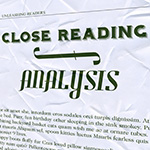
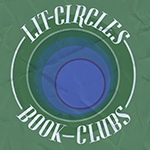

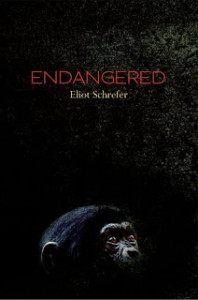
Endangered
Author: Eliot Schrefer
Published October 1st, 2013 by Scholastic Press
Summary: Sophie is a normal teenager who travels between her divorced parents who live in completely different cultural situations–her father has an office job in America and her mother runs a bonobo sanctuary in Congo. Though she was born in the Congo, the last few years have been spent in America with her father and return trips to her mother’s sanctuary. The book begins with Sophie waiting in a check point, where she spots a baby bonobo who is not being treated well and, against everyone’s wishes, she buys him.
Kellee’s Review: With Sophie’s purchase, Otto enters into her life and ours. He becomes the co-star of the book and begins to change Sophie’s feelings about being at the sanctuary. But then, right before she is about to leave, chaos at the hand of revolutionaries envelopes Congo and Sophie finds herself in a completely type of situation.
Now if you follow me here or on Twitter, you know that I am a sucker for ape books and I have been lucky that many people who care a lot about apes write some amazing ape books – this is a book to add to that list. It left me with even more of a passion for saving these animals who are our closest relative. I. Love. This. Book. It quickly moved into my favorites list even while I was only half way through with it. It is such a journey that you take with this young lady and the growth you see in her (and Otto) is incredible. On top of that, Eliot Schrefer is an author who not only can tell a good story, but he can help you become part of the story and visualize and feel everything that is happening. And I am not alone in this love. Endangered was a finalist for The National Book Award and Walden Award, Eliot Schrefer was a hit at the Scholastic Brunch at NCTE, and it is being gushed about on Twitter.
On top of all of this, I read it with my 8th graders this year and they adored it! Check out my End of (School) Year Reflection to see my reflections on teaching the novel as well as Skyping with Eliot.
Ricki’s Review: This is a beautifully crafted novel, one which will stick with me. I learned a lot about the horrors that exist within the war-torn country of the Democratic Republic of Congo, a place which I had limited knowledge about—but it also gave me a look into the life of bonobos. Each year, I give very few books a 5-star rating on GoodReads, but this one is well deserving. I wish I could give it more than five stars, to be frank. Eliot Schrefer does a brilliant job describing the powerful bond between humans and animals. There are so many elements of this text that teachers can use in the classroom that it feels like a gold mine. I’ve recommended it to adults and teens again and again—and with the confidence that I know they will appreciate the intricate beautiful of this novel. Endangered will always rank as one of the best books I have ever read. When my student returned this book, she handed it to me and paused. I waited in anticipation of her response, as she reads over a hundred books a year and is very critical. She chose her words slowly and carefully. “I don’t like animals, so I didn’t want to read this. You kept talking about it, so I finally decided to just go for it. This isn’t a book about animals, and really, it isn’t a book about war. It is a book that is about being human.”
Discussion Questions: Sophie makes many decisions throughout the book that many people, specifically her parents, would not have agreed with. Would you have made the same decisions as her? Were there any you would have done differently? Do you think her decisions were worth it? Use textual evidence to back your answers.; What does this book teach us about being human?; In what ways do the bonobos reflect humanity?; How does the war-torn setting add to this story?
We Flagged: “The man released the bonobo. The little ape sat down tiredly in the dirt and lowered his arms, wincing as his sore muscles relaxed. I kneeled and reached out to him. The bonobo glanced at his master before working up the energy to stand and toddle over to me. He leaned against my shin for a moment, then extended his arms to be picked up. I lift him easily and hugged himself to me, his fragile arms as light as a necklace. I could make out his individual ribs under my figures, could feel his heart flutter against my throat. He pressed his lips against my check , I guess to get as close as possible to my skin, and only then did I hear his faint cries; he’d been making them for so long that his voice was gone.” (p. 3-4)
Read This If You Loved: Half Brother by Kenneth Oppel, Hurt Go Happy by Ginny Rorby, The One and Only Ivan by Katherine Applegate, The Chimpanzees I Love by Jane Goodall, Tree Girl by Ben Mikaelsen, Heart of Darkness by Joseph Conrad, Faithful Elephants by Yukio Tsuchiya, Non-fiction books about bonobos or the Democratic Republic of Congo
Recommended For:




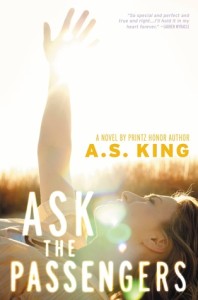
Ask the Passengers
Author: A.S. King
Published October 23rd, 2012 by Little, Brown Books for Young Readers
Summary: Astrid is very cerebral–she can get lost in philosophical theories and questions about the world. Her favorite pastime is laying on the bench in her backyard so she can send her love to the passengers on the airplanes that fly overhead. At her catering job, Astrid meets Dee, and she falls in love. She isn’t sure if this makes her a lesbian, as she has never loved another girl, and society wants to fit her in a box that she isn’t quite sure describes her.
Kellee’s Review: I am fascinated with the setting of this book. It seems like a perfect place to live, but really everyone is living a lie. It reminds me a bit of “Stepford Wives.” What a sad existence. Maybe I am (the opposite of) sheltered because my parents and my friends always supported me to be who I am. However, because of King’s perfect depiction of Astrid’s experiences, it transplants me right into Astrid’s shoes.
Besides the setting, the characters are what makes this book a star. Astrid is a character that every reader will connect with in one way or another: she doesn’t exactly fit in though she doesn’t stick out, she has a secret she feels like she can’t tell anyone, and as a teenager she doesn’t exactly get along with her family. While Astrid is strong, so are the secondary characters. You know that if you want to jump into a book and just go off on a character that the author has done their job (UGH! The mom will drive you crazy too!). This book would not move without its secondary characters; although Astrid is our protagonist, it is the secondary characters that drive much of the story. It is amazing how all of the characters are so fleshed out.
Finally, like all King novels, the way it is written just adds that element that pushes this book to being an award winner. King’s ability to give her characters a voice is phenomenal. Each of her novels have such a unique personality and she is able to give them each a unique voice. She also adds humor and intelligence to each of her books.
Ricki’s Review: Astrid’s character felt very real to me. Despite the heartache and lack of love in her own life, she manages to send all of her love to people she doesn’t even know–strangers in the sky. I can’t help but peer up at airplanes now and send my love to the passengers. Astrid is not a typical high school student. She lives by her principles and stays true to herself amidst the pressures that teens face. She is an unbelievable role model for both adolescents and adults.
Astrid teaches us to give our love away when we aren’t feeling any ourselves. She connects herself with complete strangers when those who are closest to her are emotionally failing her. Teens will learn to reach out and grasp love in the most unconventional places. The warmth that emanates from this book makes it incredibly special.
Discussion Questions: How do the passengers’ stories add to the richness of this text?; How does the setting influence aspects of the book?; Does society expect us to fit into neat boxes with labels?; What complications exist in Astrid’s life? Which coping mechanisms does she use to relieve her pain? Which other coping mechanisms might she use?
We Flagged: “I mean to say: Everybody’s always looking for the person they’re better than.” (page 231)
Read This If You Loved: Please Ignore Vera Deitz by A.S. King, Everybody Sees the Ants by A.S. King, Personal Effects by E.M. Kokie, The Perks of Being a Wallflower by Stephen Chbosky, Luna by Julie Anne Peters, Almost Perfect by Brian Katcher
Recommended For:



Which of these finalists have you read? What did you think of them?
We’re so excited to review the winner tomorrow!
 and
and
